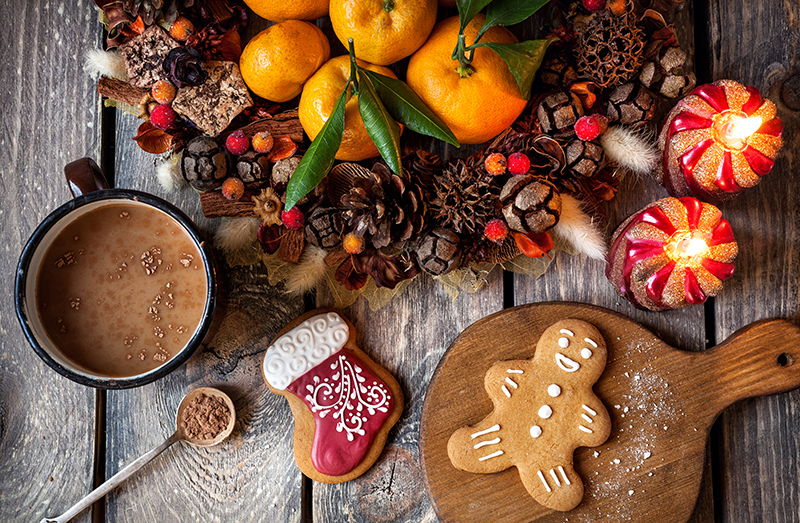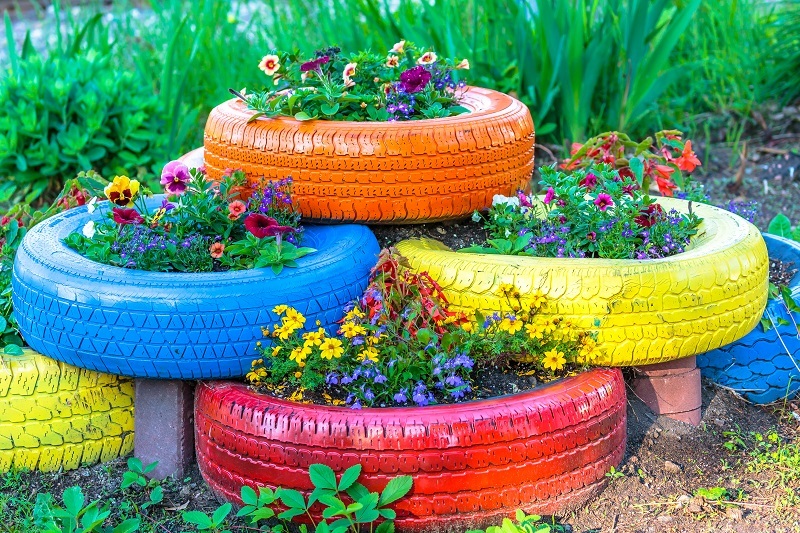Foolproof Methods to Keep Your Poinsettias Blooming Longer
Poinsettias are the classic holiday plant, cherished for their vibrant red, white, pink, or spotted bracts and deep green foliage. Yet, many homeowners wonder: How can you keep your poinsettias blooming longer? If you've received or purchased a lovely poinsettia this holiday season, you'll want to enjoy its beauty for as long as possible. In this comprehensive guide, we'll share foolproof methods and expert poinsettia care tips--so these dazzling blooms can grace your space well beyond the festive period.
Understanding Poinsettias: The Basics
Before diving into the best practices to extend the life of poinsettias, it's important to understand a little about this famous plant. Poinsettias (Euphorbia pulcherrima) are native to Mexico and thrive in warm, indirect sunlight. The colorful "flowers" we admire are actually modified leaves called bracts. The true flowers are the tiny yellow clusters at the center. Knowing this can help with their care, as the longevity of the bracts determines how long your poinsettia will look fresh and festive.
Origins of Poinsettias
Poinsettias were introduced to the U.S. in the early 1800s by Joel Poinsett, the first U.S. ambassador to Mexico, hence the name. Since then, they have become symbolic of holiday cheer and winter celebrations.

Foolproof Methods for Keeping Your Poinsettias Blooming Longer
1. Choosing a Healthy Plant
- Inspect for vibrant bracts: Healthy, long-lasting poinsettias have brightly colored and intact bracts. Brown edges or drooping leaves indicate poor health.
- Check the center blooms: The yellow flower clusters should be tight and not yet shedding. Open or missing flowers mean the plant is past its peak.
- Leaf quality: Leaves should be full, rich green, and not wilted or spotted.
A vibrant, healthy plant at the start gives you the best chance of prolonging poinsettia blooms.
2. Ideal Placement in Your Home
Poinsettias thrive with thoughtful placement:
- Bright, indirect sunlight: Place your poinsettia near a sunny window with indirect light. Direct sunlight for several hours is beneficial, but harsh rays can scorch the leaves.
- Consistent temperature: Aim for temperatures between 65-75?F (18-24?C) during the day, and no lower than 60?F (15.5?C) at night. Avoid cold drafts from windows or doors and keep away from heat sources like radiators and fireplaces.
- Humidity: Poinsettias prefer moderate humidity. Use a humidifier if your home is particularly dry in winter.
3. Proper Watering Techniques
Overwatering or underwatering can quickly ruin a poinsettia. Follow these steps:
- Check the soil daily; water the plant only when the surface feels dry to the touch. Too-wet soil leads to root rot.
- Water thoroughly until liquid drains from the bottom, but don't leave the pot sitting in excess water. Remove the decorative foil wrapper or poke holes in it for drainage.
- Use room temperature water and water at the soil, not on the leaves.
Tip: If your home is dry, placing the pot on a tray filled with pebbles and water raises humidity around the plant.
4. Fertilizing for Extended Blooms
While poinsettias don't need fertilizer when in full bloom, feeding becomes important once new growth appears (after the holidays).
- Use a balanced, all-purpose houseplant fertilizer every 3-4 weeks starting in late winter to early spring.
- Follow the product instructions and never fertilize dry soil (water first).
5. Pruning Practices
To help poinsettias bloom longer, occasional pruning is beneficial:
- Remove spent bracts or fading leaves to encourage airflow and new growth.
- After blooming, you can cut the plant back to about 6 inches to maintain a bushy, full shape as it regrows.
Be careful to wear gloves when pruning, as poinsettias exude a milky sap which may irritate the skin.
6. Mindful Environmental Conditions
Poinsettias are sensitive to abrupt changes:
- Keep away from temperature extremes like vents, heaters, or cold windowsills.
- If you need to move your poinsettia, do so gently and gradually to avoid shock.
- Avoid places with frequent drafts or strong breezes.
7. Preventing and Treating Pests
While poinsettias are not highly susceptible to pests, keeping your plant pest-free ensures longer blooming.
- Inspect regularly for whiteflies, aphids, or spider mites. Remove infested leaves and treat with insecticidal soap if necessary.
- Clean the leaves with a damp, soft cloth to keep them dust-free.
- Avoid overcrowding with other houseplants, which can promote disease spread.
Advanced Care: Re-Blooming Poinsettias
If you are passionate about making poinsettias re-bloom next year, you'll need to simulate natural conditions:
Photoperiod Treatment: Inducing Next Season's Blooms
- In early spring, after the bracts fade, prune the plant down to 6 inches and continue regular watering and monthly fertilizing.
- In late May, repot in fresh soil and place outdoors in partial shade when temperatures are consistently above 50?F (10?C). Grow stems by pinching back in June and July.
- In mid-to-late September, bring the plant indoors before nightly lows drop below 60?F (15?C).
- Initiate "short-day treatment": For about 8-10 weeks before your desired bloom time, expose the poinsettia to complete darkness for 14 hours each night (e.g., place in a closet or cover with a box). During the day, ensure bright, indirect light. This signals the plant that winter is coming, triggering bract coloration.
- Resume normal care when you see vibrant bracts form. By Thanksgiving to Christmas, your poinsettia should be vibrant and lively once more!
Common Mistakes That Shorten Poinsettia Blooms
Even devoted plant owners sometimes shorten the bloom time by accident. Avoid these pitfalls:
- Overwatering: Roots rot quickly in soggy soil.
- Cold exposure: Chilling, even for a few minutes, damages bracts and leaves.
- Neglecting drainage: Decorative outer wrapping often traps water at the bottom.
- Forgetting humidity: Dry air makes leaves drop prematurely.
- Exposing to direct drafts: Can cause rapid wilting or leaf fall.
Decorative Tips: Displaying Poinsettias for Lasting Impact
How you display poinsettias matters for both beauty and health:
- Group for effect: Use several plants of varying heights and colors for a lively arrangement.
- Complement with evergreens or candles to highlight those vibrant bracts.
- Rotate regularly to ensure even light exposure and symmetrical plant growth.
- Keep away from fruit bowls, as ethylene gas from ripening fruit can hasten bract drop.
Expert Q&A: Ensuring Poinsettias Bloom Longer
How long do poinsettia blooms typically last?
With optimal care, you can keep poinsettias blooming for 6-8 weeks or longer. Sometimes, with meticulous "regreening" efforts, plants will return for many holiday seasons.
Are poinsettias poisonous to pets and children?
Though long rumored to be highly toxic, poinsettias are only mildly harmful if ingested. They may cause mild stomach upset or skin irritation but are seldom dangerous in typical home scenarios. Still, keep plants out of reach from curious pets and kids just in case.
Extra Tips to Prolong Poinsettia Blooms
- Avoid touching or moving the plant unnecessarily. Handling can bruise the fragile bracts and leaves.
- If the room is especially dry, mist gently with lukewarm water.
- Use filtered or distilled water in areas with hard water, as salts accumulate and can damage roots.
- If the plant becomes leggy, pinch off growing tips to promote bushiness and new growth.

Conclusion: Your Roadmap to Vibrant, Long-Lasting Poinsettias
Applying these foolproof strategies for long-lasting poinsettias ensures your festive plant stays stunning throughout the holiday season and beyond. Remember: select a healthy plant, place it thoughtfully, water with care, mind temperature and humidity, and guard against pests and shocks. And with a little advanced effort, you can even encourage your poinsettia to return next year with the same bold beauty. Happy gardening, and here's to keeping your poinsettias bright and blooming!
Related Resources
- University of Minnesota Extension: Poinsettia Care
- Clemson Cooperative Extension: Poinsettia
- Garden Design: Poinsettia Houseplant Guide
We hope these proven poinsettia care tips help you enjoy the glowing charm of this classic winter flower for as long as possible!

